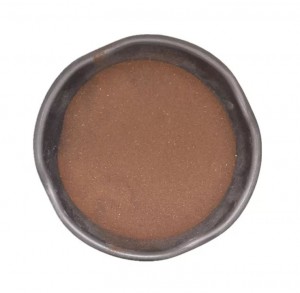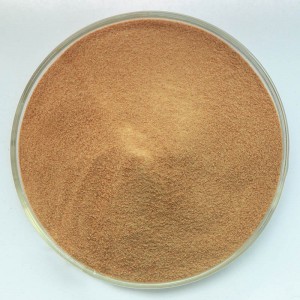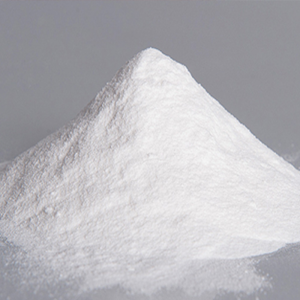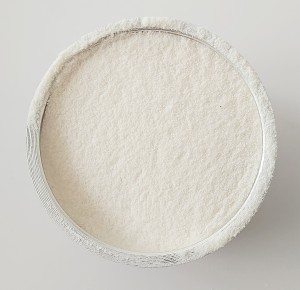-

Calcium Lignosulphonate CAS 8061-52-7
Calcium Lignosulfonate (Molecular Formula C20H24CaO10S2)CAS No.8061-52-7, is yellow brown soluble powder.By nature is polymer electrolyte having a molecular weight from the 1,000-100000. 10000-40000 dispersion.can be used as concrete superplasticizer. Cement slurry thinners, sand reinforcement, pesticide emulsifier, dispersant dressing, leather pre-tanning agent, ceramic or refractory plasticizer, an oil or dam grouting gel,calcium and magnesium fertilizer and so on.
-

Calcium Lignosulfonate CAS 8061-52-7
Calcium lignosulfonate (Abbreviation:calcium wood) is a multi-component polymer anionic surfactant. Its appearance is light yellow to dark brown powder with a slight aromatic odor. The molecular weight is generally between 800 and 10,000. Strong dispersibility, adhesion and chelating properties. Usually comes from the cooking waste liquid of acid pulping (or called sulfite pulping), which is made by spray drying. Can contain up to 30% reducing sugars. It is soluble in water, but insoluble in any common organic solvents.
-

Dispersant MF
Dispersant MF is an anionic surfactant, dark brown powder, soluble in water, easy to absorb moisture, nonflammable, with excellent dispersant and thermal stability, no permeability and foaming, resisting acid and alkali, hard water and inorganic salts, no affinity for fibers such as cotton and linen; have affinity for proteins and polyamide fibers; can be used in conjunction with anionic and nonionic surfactants, but not in combination with cationic dyes or surfactants.
-

Dispersant NNO
Dispersant NNO is an anionic surfactant, the chemical name is naphthalene sulfonate formaldehyde condensation, yellow brown powder, soluble in water, resisting acid and alkali, hard water and inorganic salts, with excellent dispersant and protection of colloidal properties, no permeability and foaming, have affinity for proteins and polyamide fibers, no affinity for fibers such as cotton and linen.
-

Sulfonated Melamine Formaldehyde Resin CAS 9003-08-1
Sulfonated melamine formaldehyde (melamine), commonly known as melamine, protein essence, molecular formula is C3H6N6, IUPAC named “1,3, 5-triazine-2,4, 6-triamine”, is a triazine-containing heterocyclic organic compounds as chemical raw materials. It is a white monoclinic crystal, almost odorless, slightly soluble in water (at room temperature 3.1g/L), soluble in methanol, formaldehyde, acetic acid, hot glycol, glycerin, pyridine, etc., insoluble in acetone, ether, harmful to human body, can not be used in food processing or food additives.
-

Sulfonated Melamine Superplasticizer SMF Powder
SMF is a free-flowing, spray dried powder of a sulphonated polycondensation product based on melamine. Non-air entraining, good whiteness, no corrosion to iron and excellent adaptability to cement.It is especially optimized for plastification and water reduction of cement and gypsum based materials.
-

Redispersible Polymer Powder VAE RDP
Redispersible latex powder products for water soluble redispersible powder, divided into ethylene/vinyl acetate copolymer, ethylene acetate/tert carbonate copolymer, acrylic copolymer and so on, spray drying made of powder adhesive, polyvinyl alcohol as a protective colloid. This powder can be quickly dispersed into emulsion after contact with water, because of the redispersed latex powder has high bonding ability and unique properties, such as: water resistance, construction and heat insulation, therefore, their range of application is extremely wide.
-

Hydroxypropyl Methyl Cellulose (HPMC)
Hydroxypropyl methyl cellulose, simplify the propyl methyl cellulose (HPMC hydroxypropylmethylcellulose, abbreviation), it is to belong to a variety of mixed non-ionic cellulose ether. It is a semi-synthetic, inactive, viscoelastic polymer commonly used in ophthalmology as a lubricant, or as an excipient or excipient in oral medicines, commonly found in a wide variety of commodities. Hydroxypropyl cellulose can be used as a food additive, emulsifier, thickener, suspension agent and animal gelatin substitute.
ITEMS SPECIFICATIONS Appearance White Powder Decomposition Temperature 200min Discoloration Temperature 190-200℃ Viscosity 400 PH Value 5~8 Density 1.39g/cm3 Carbonization temperature 280-300℃ Type Food grade Content 99% Surface tension 42-56dyne/cm for 2% aqueous solution -

Hydroxypropyl Methylcellulose (MHPC)
Hydroxypropyl methylcellulose (MHPC) are odorless, tasteless,non-toxic cellulose ethers that have had hyrdroxyl groups on the cellulose chain substituted for a methoxy or hydroxypropyl group with good water solubility. HPMC F60S is high-viscosity grade which is used as a thickener, binder, and film former in agrochemicals, coatings, ceramics, adhesives, inks, and various other applications.
-

Hydroxyethyl Cellulose (HEC)
Hydroxyethyl Cellulose(HEC) is a non-ionic,water-soluble polymer derived form cellulose through a series of chemical and physical processes.HEC is a white to light yellowish,odorless and tasteless powder,readily soluble in hot or cold water to form a viscous gel solution.When pH in solution 2 to 12,the solution is quite stable.Since HEC group is nonionic one in water solution, it won’t be reacted with other anions or cations and insensitive to the salts.
But HEC molecule is capable of generating esterification,etherification,so it is possible to make it insoluble in water or improve its properties.HEC also has good film-forming ability and surface activity. -

Polyether Defoamer
JF Polyether Defoamer is specially developed for the need of oil well consolidation. It is white liquid. This product effectively controls and eliminates system air bubble. With small amount, foam is reduced rapidly. The usage is convenient and free from corrosion or other side effect.
-

Silicone Defoamer
The defoamer for papermaking can be added after the foam is generated or added as a foam inhibitor to the product. According to different use systems, the addition amount of the defoamer can be 10~1000ppm. Generally, the consumption of paper per ton of white water in papermaking is 150~300g, the best addition amount is determined by the customer according to the specific conditions. The paper defoamer can be used directly or after being diluted. If it can be fully stirred and dispersed in the foaming system, it can be added directly without dilution. If you need to dilute, please ask for the method of dilution directly from our company. The method of directly diluting the product with water is not advisable, and it is prone to phenomena such as layering and demulsification, which will affect the quality of the product.
JF-10 ITEMS SPECIFICATIONS Appearance White Translucent Paste Liquid pH Value 6.5~8.0 Solid Content 100% (no moisture content) Viscosity (25℃) 80~100mPa Emulsion Type Non-ionic Thinner 1.5%~2% Polyacrylic Acid Thickening Water













